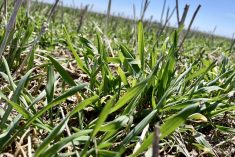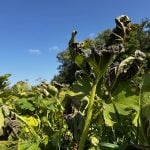BUENOS AIRES (Reuters) — Ample sun interrupted about once a week by moderate rains should give Argentina a good start to April soy harvesting, weather experts said on Wednesday, setting the stage for a record crop in the world’s No. 3 supplier of beans.
This year’s harvest is expected at over 54 million tonnes, an all-time high that will put downward pressure on global food prices. Argentine soy is used globally as an animal feed, with China one of the fastest growing markets on rising domestic demand for beef.
Growers on the Pampas farm belt have begun harvesting their early-planted soy, with the bulk of the crop set to come in next month after a very rainy February and first half of March.
Read Also

Pulse Weekly: Talk arises of India ending duty-free period
With harvest underway across the Canadian Prairies rumblings has been felt from the other side of the world, specifically in regards yellow peas. There have been recent media reports stating the Indian government is under growing domestic pressure to end its duty-free period on yellow pea imports.
“Given that a lot of fields are still soggy, the harvest is getting off to a slow start,” said Eduardo Sierra, a climate adviser to the Buenos Aires Grains Exchange. “Harvesting tempo will likely pick up after (Roman Catholic) Holy Week (April 13-19) when the weather will by dryer and cooler.”
The good news is that fields left waterlogged by February and early March storms are drying out with help from a recent series of sunny days.
“The weather has been very good this week,” said German Heinzenknecht, a meteorologist at the Applied Climatology consultancy.
Heinzenknecht said that on Thursday and Friday eastern farm provinces Entre Rios, Santa Fe and parts of northeastern Buenos Aires will get rain. A day or so of sun is expected to follow before a cold front brings generalized storms to the grains belt on Sunday and Monday.
“Growers in the western part of the belt can harvest calmly between now and Sunday. In the east they will have to work more quickly because rain is predicted on Thursday and Friday in Santa Fe and Entre Rios,” Heinzenknecht said.
“Good windows of harvesting will open in April. But about once a week, rains will interrupt the work for at least 24 hours,” he added. “Starting on Tuesday and during all of April, rainfall on the Pampas is forecasted at normal levels. You can count on five or six substantial rainfalls during the month.”
The Rosario grains exchange expects Argentina’s upcoming soy harvest to come in at 54.7 million tonnes versus 48.3 million in 2013. The Buenos Aires exchange sees the upcoming crop at 54.5 million tonnes versus 48.5 million last season.
The Argentine government called the 2013 crop at 49.3 million tonnes and has not yet issued a 2014 forecast. The country’s record crop was 52.7 million tonnes collected in 2010, according to the agriculture ministry.
The Pampas weather forecast for April is 70 percent sunny and 30 percent cloudy or rainy, according to Antonio Deane, head of local consultancy Weather Wise Argentina.
Soils should be dry enough to allow harvesting machines to move efficiently while Deane warns that expected April cold snaps could lower potential yields in some areas.
“But the areas offering high yields will more than compensate for those lower-yielding areas because the size of the harvest of over average,” he said.














